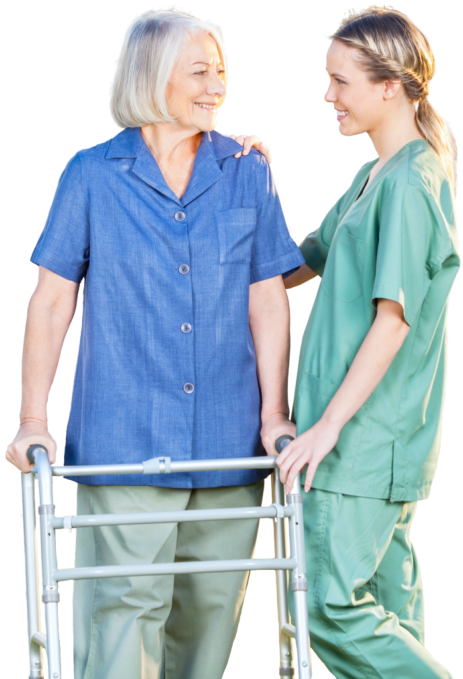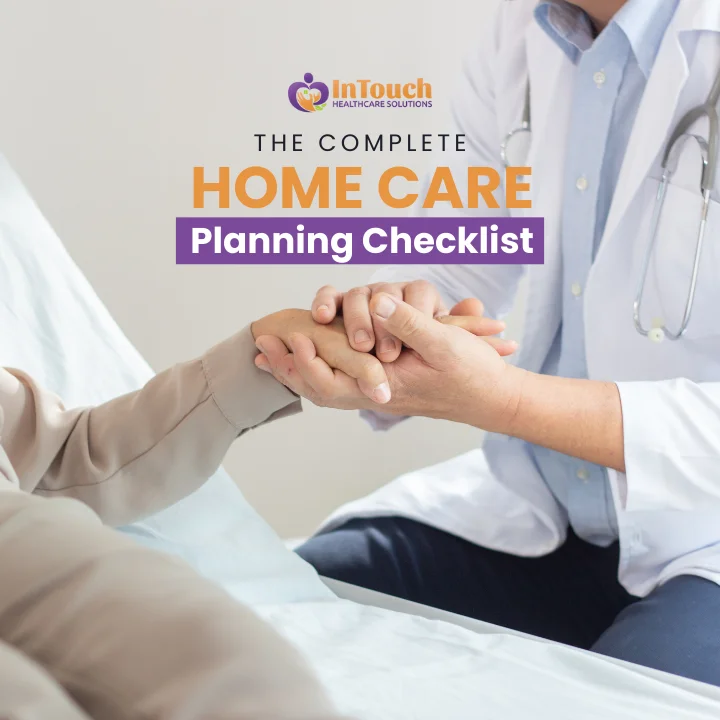
Home care for stroke recovery can play a critical role in healing, particularly in the first weeks and months after discharge. For many families, the hospital stay feels like the hardest part — but real challenges often begin at home. Stroke survivors face new limitations, and loved ones must quickly learn how to assist with mobility, personal care, and safety. It’s overwhelming without support.
The good news? Professional home healthcare services can guide families through this transition with experience, structure, and tailored care. According to the American Stroke Association, recovery at home is not only possible — it’s preferable in many cases. This article offers realistic guidance for families navigating stroke recovery and outlines how in-home care can make a lasting difference.
Key Takeaways
- Home care for stroke recovery supports physical, cognitive, and emotional healing in a safe, familiar environment.
- Safety adjustments at home are essential to reduce the risk of falls and complications.
- Professional caregivers help with mobility, hygiene, medication reminders, and communication with healthcare providers.
- Home healthcare agencies like InTouch Healthcare Solutions can reduce caregiver stress and improve long-term recovery outcomes.

Stroke Recovery Starts at Home
Discharge from the hospital is not the end of stroke recovery — it’s a major transition. Once the immediate medical crisis has passed, survivors return home needing significant support for walking, eating, bathing, and speaking. Many families aren’t prepared for how different everyday life becomes.
According to the National Library of Medicine, up to two-thirds of stroke survivors experience lasting physical or cognitive impairments. This often includes partial paralysis, memory loss, difficulty communicating, or trouble with fine motor skills. When these challenges are not managed properly, there’s a higher risk of falls, medication mishaps, emotional distress, and hospital readmission.
Home becomes the new center of recovery — and that environment must support the survivor’s healing process. This is where stroke rehabilitation at home becomes crucial. Trained professionals assess the person’s condition, develop personalized care routines, and help make the home safer and more functional. Families gain peace of mind, and stroke survivors benefit from continuity and comfort.
Is In-Home Stroke Support Right for My Family?
Choosing the right recovery path depends on the stroke’s severity, the survivor’s needs, and the family’s ability to assist. While outpatient rehab or skilled nursing facilities work for some, many people benefit more from in-home stroke support, especially when care must be ongoing and hands-on.
Home care may be the right choice if:
- The survivor struggles with personal care, such as toileting, dressing, or eating.
- There are cognitive or memory issues that make unsupervised time risky.
- The family caregiver feels overwhelmed or lacks medical experience.
- Physical therapy is needed, but attending appointments is difficult.
- Emotional or behavioral changes make structure and supervision important.
A reputable post-stroke care services provider evaluates the individual’s needs and matches them with professionals who are trained in stroke recovery — from physical support to communication and emotional regulation.
How to Prepare the Home for Early Stroke Recovery
Recovering at home after a stroke only works if the environment supports safety and functionality. Many households are not automatically suited for a person with new limitations — stairs, rugs, narrow bathrooms, and poor lighting can all become hazards.
A home healthcare agency typically conducts a full safety assessment and recommends practical, affordable modifications to prevent accidents and support independence. These might include:
- Installing grab bars in the bathroom, near toilets and showers
- Using non-slip mats and nightlights for better visibility
- Rearranging furniture to allow space for walkers or wheelchairs
- Removing clutter and cords to reduce tripping hazards
- Labeling key items to assist with memory and orientation
According to studies, these changes improve both safety and confidence. A well-prepared home helps stroke survivors engage more fully in their recovery and participate in therapy routines with fewer setbacks.
What Services Are Included in Post-Stroke Care at Home?
Home care for stroke recovery involves more than just supervision — it includes personalized services that help stroke survivors regain independence and manage daily life. Depending on the person’s condition, a home healthcare plan may involve:
- Personal care after stroke, such as help with dressing, hygiene, and toileting
- Monitoring for physical changes or new symptoms
- Support with eating, hydration, and managing special diets
- Assistance with walking and transferring between bed, chair, and bathroom
- Guidance on using medical equipment like walkers or bedside commodes
- Medication reminders and coordination with medical providers
- Help practicing speech, memory tools, or movement exercises
These services are flexible and evolve as the person improves or as needs change. Families benefit from having consistent, trained professionals who understand stroke-related challenges — and who offer reassurance when things feel uncertain.
A home healthcare agency like InTouch ensures that early stroke recovery at home is supported with compassion and clinical expertise. Over time, this approach often leads to more stable recovery and greater confidence for both the survivor and their caregivers.
Why Home Healthcare Makes Stroke Rehabilitation More Manageable
For many families, stroke recovery at home feels like uncharted territory. The person recovering may be frustrated, confused, or fatigued. Meanwhile, loved ones feel pressure to be both caregivers and advocates. Home healthcare services ease this burden.
Professional support brings structure, accountability, and encouragement. It allows the survivor to focus on goals, one step at a time, with help from someone trained in stroke rehabilitation. Over time, this can lead to:
- Better follow-through with medical and therapy instructions
- Fewer preventable setbacks, such as falls or infections
- Reduced stress and depression, which can delay healing
- Improved communication with doctors and specialists
When families work with a dedicated home healthcare team, they gain a partner in the recovery process — someone who understands both the medical side and the human side of healing. This holistic support can make the difference between surviving and truly recovering.
Conclusion
Home care for stroke recovery provides an essential bridge between hospital discharge and independent living. By receiving care at home, stroke survivors can heal in a safe, familiar place while continuing to make progress with daily activities, therapy, and emotional well-being.
Recovery doesn’t happen overnight — but with the right support, it does happen. Families who choose in-home care services gain peace of mind, expert guidance, and a path forward that fits their loved one’s needs.
If you’re navigating life after a stroke, know that you don’t have to do it alone. In-home care may be the key to rebuilding life — one day, one step, and one victory at a time. Contact us today!
Frequently Asked Questions about Home Care for Stroke Recovery
What is the best treatment for a stroke patient at home?
The best treatment includes physical therapy, occupational therapy, and help with daily tasks — all guided by professionals experienced in post-stroke care. Personalized support and a safe environment are key to recovery.
Can elderly people live alone after a stroke?
It depends on the severity of the stroke. Some may live independently with minor adjustments and regular check-ins. Others with mobility, memory, or speech issues may need daily in-home support to stay safe.
How long does stroke recovery at home take?
Recovery time varies based on stroke severity and the person’s overall health. It can take weeks, months, or longer. Consistent home care and therapy can improve progress and reduce setbacks.
What should a caregiver do for someone recovering from a stroke at home?
Caregivers help with walking, bathing, meals, medication, and emotional support. They also assist with exercises and monitor for changes in condition, working closely with healthcare professionals.
What home modifications help stroke survivors recover safely?
Useful changes include adding grab bars, removing loose rugs, improving lighting, clearing walking paths, and using bathroom safety tools. These modifications lower the risk of falls and support independence.






